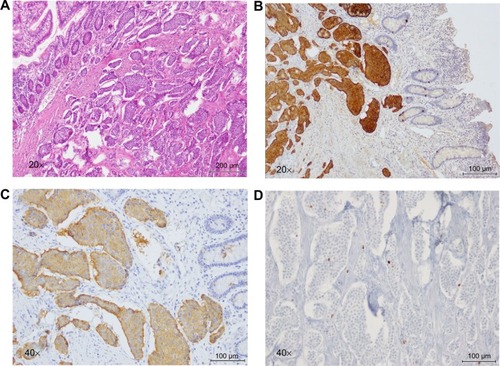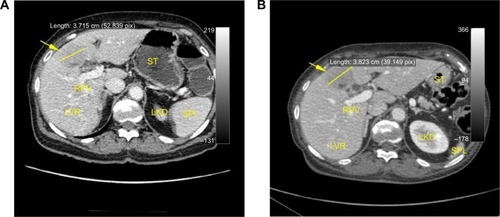Figures & data
Figure 1 Histological examination with immunohistochemistry and hematoxylin-eosin staining (e/e).

Figure 2 Liver metastatic NET.
Abbreviations: LVR, liver; RPV, right branch of the portal vein; ST, stomach; LKD, left kidney; SPL, spleen; NET, neuroendocrine tumor; CT, computed tomography; SD, stable disease.

Figure 3 Liver metastatic NET.
Abbreviations: LVR, liver; ST, stomach; SPL, spleen; LKD, left kidney; NET, neuroendocrine tumor; CT, computed tomography.

Table 1 After 3 months of OCT LAR 30 mg, an almost complete clinical response was observed in the patient, with symptom regression and PS recovery from ECOG PS 2 to ECOG PS 0
